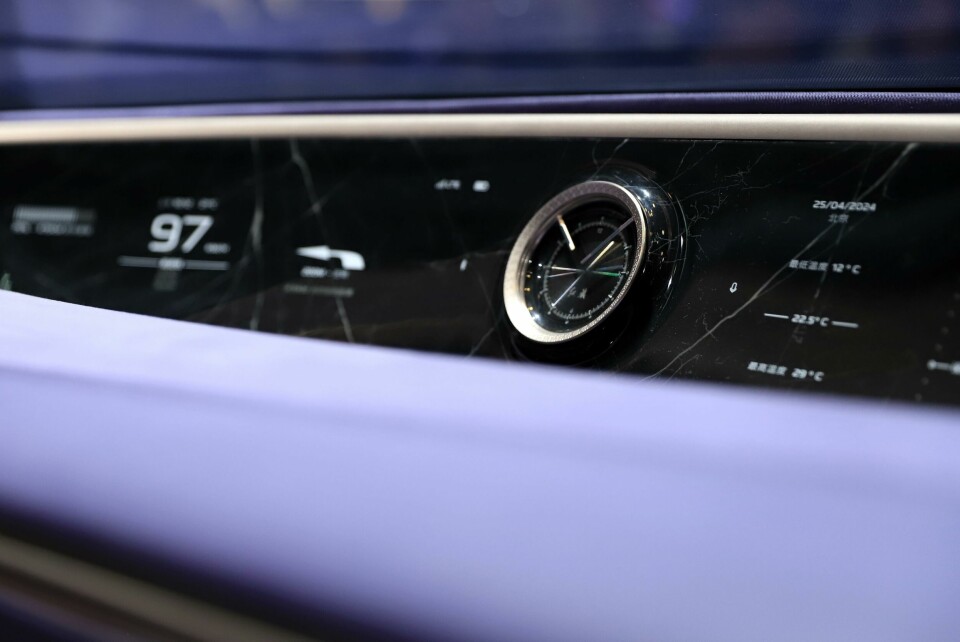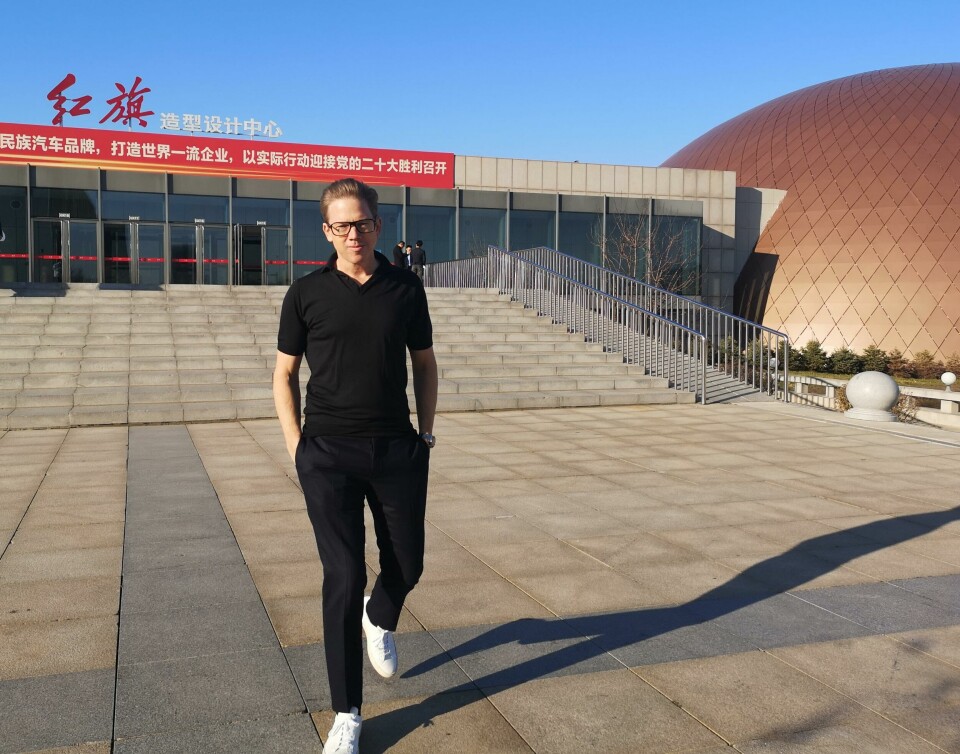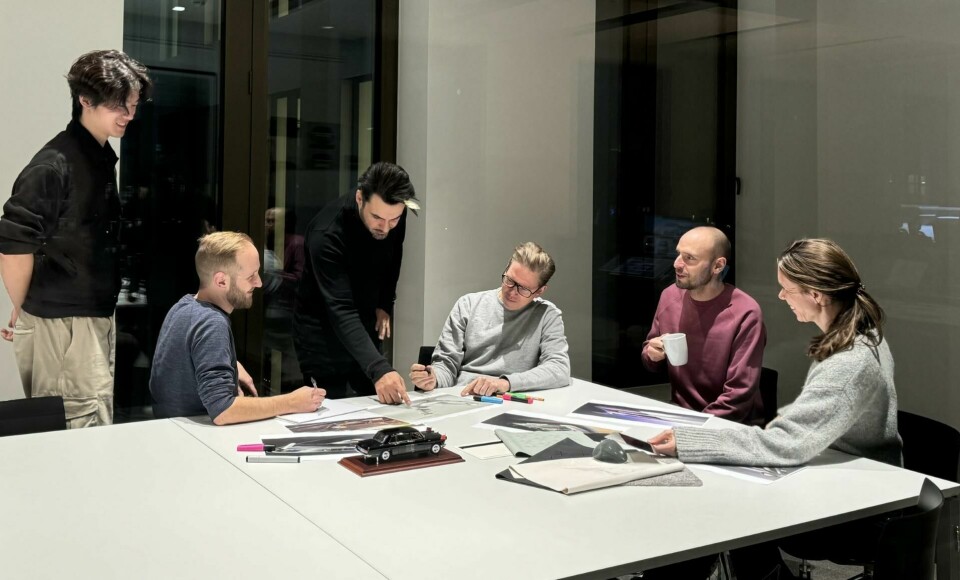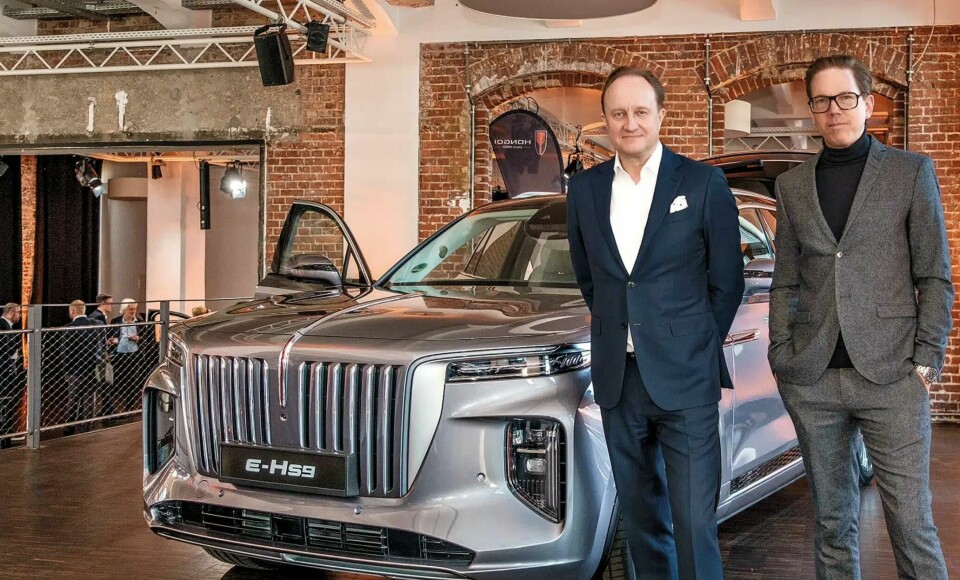
FAW’s chief interior designer talks DNA and Chinese tradition
Jan Kaul of FAW describes a conscious move away from big screens in order to create strong brand identity, marrying traditional influence with new technology
With 20 years of experience in the interior design team at Mercedes-Benz, Jan Kaul worked on numerous iconic production models that became extremely important for the German marque, from the A-Class to the S-Class, the EQC to the AMG GT. He also had a hand in the IAA concept that turned heads at the Frankfurt Motor Show in 2015, and the Generation EQ concept unveiled in 2016 that marked the start of the company’s EQ sub-brand launch.
But in 2022 he took on a new role, one that has proved particularly challenging for a European. Now head of interior design at FAW Munich, Kaul leads a team of talented young designers that work on the FAW, Hongqi and Bestune brands, with the goal of pushing the boundaries of Chinese design in the car world.

Car Design News: What was the transition like from spending over 19 years at Mercedes-Benz to working at China FAW Group?
Jan Kaul: I started at Mercedes-Benz in 2002, and when I resigned in 2022 we had just finished the third generation of the E-Class that I was involved in. So I thought: it has been good, but do I want to continue doing the same for another 15 years? FAW was very interesting to me because, although the company is extremely different to Mercedes-Benz, there are clearly certain similarities.
FAW is the oldest Chinese car brand, and with Hongqi and Golden Sunflower, the only real luxury car brand with heritage, history and a very strong reputation in China. I see so much potential for the company in China and beyond. It has such a diverse portfolio, and the Hongqi H9 and the E-HS9 are flagships that are now available in European countries, with the latter already enjoying success in Norway.
JK: What makes FAW very different to Mercedes-Benz is the design process. The ideation phase is much longer and the level of detailing and precision expected in presentations is really something else.
The photoshop and illustration skills of our Chinese designers in Changchun are very impressive, and in our Munich studio we use poly-modeling combined with VR to compensate for the clay and CAS phases, which are much shorter than at western OEMs. I have always really loved working on full-scale clay models, but I can see that new technologies are fundamentally changing the way we work, and AI tools such as Midjourney, Stable Diffusion or Vizcom are having quite an impact on our creative process.

CDN: Can you explain how your time is split between the various brands in the China FAW Group?
JK: Hongqi has many new products planned for the future, so that is the main focus right now. The portfolio is split by ‘Energy Saving’ and ‘New Energy’ products, both being sub-brands. This year my team and I have been very busy with work on design strategy and the development of an interior design DNA and brand DNA for 2028 and beyond. This also includes CMF and the implementation of Chinese aesthetics, which are so important to our executives.
As a westerner it’s difficult to fully understand aesthetics that are inspired by 1000-year-old cave paintings or temple architecture. I rely on my Chinese colleagues and learn a lot
The year started with the Concept Golden Sunflower – an ultra-luxurious vehicle for the Golden Sunflower brand that we unveiled at the Beijing Auto Show. We had the final design confirmation in January and had the CAS freeze for the model supplier in February. The whole car was finished in March. It was a crazy time schedule: from zero to completion in just three months.

CDN: How do you and your team leverage traditional Chinese design principles?
JK: Developing a future design DNA for Hongqi that establishes a balanced fusion of western modernity and Chinese aesthetics is, for me, probably the most exciting and challenging task. I have to admit that being a westerner makes it very difficult to fully understand Chinese aesthetics that are inspired by 1000-year-old cave paintings in Dunhuang, for example, or little details in the architecture of the Temple Of Heaven in Beijing. I rely on my Chinese colleagues and I learn a lot about the dynasties, the Silk Road, the culinary differences in the south and the north, the lifestyle differences in Chengdu and Beijing or Shanghai.
We would like to implement these Chinese inspirations in a subtle way, like a second layer that might be tangible but isn’t too obvious. CMF can be an important tool for this. The luxury cars of Golden Sunflower use real craftsmanship to showcase Chinese design principles. The concept car has beautiful details with ancient Chinese motives translated into a modern and tasteful context. The colour purple, for example, is associated with the emperor and aristocracy, and the circle as a gesture is a symbol for completeness and unity.
CDN: How do you juggle the balance between drawing on inspiration from tradition while differentiating from others and pushing the brand into the future?
JK: My hot take from the Beijing Auto Show this year was that strong design is everywhere. There are many Chinese brands presenting well-executed Taycan look-alikes, but with added innovation and extremely competitive pricing. However, in my opinion, there are currently no distinctive or recognisable products in the upper premium or luxury segment. This is a big chance for Hongqi to establish a brand and design DNA that is unique – a brand that is proud to be Chinese and is fully aware of its history and heritage.
In order to create desirable products, which is essential for a luxury brand, you have to be a leader in design and innovation. We must find the right balance of modernity paired with exciting innovation and tradition, so the influence of tradition cannot be too literal and must be interpreted in a contemporary way.

CDN: What is the most challenging question facing interior designers at the moment?
JK: For me one of the biggest questions right now is how we interact with the car in the future. Touchscreens are everywhere right now, in cheap mainstream cars and expensive luxury cars. I personally wouldn’t want a large OLED screen in my living room on every wall, and prefer tech to be discrete and only there when needed.
I always think of the classic Porsche 911 – what’s more sustainable than having a product that does its job for 50 plus years?
So the question is: what comes after this phase of putting large screens everywhere? Is there a period of having no screens, and if so, how will we offer entertainment and display relevant information? At the moment, the evolution of interior architecture is being stunted by the trend of having screens everywhere. I hope this changes soon, and think that we will see completely new ideas for dashboards, centre consoles and second seat rows. The idea of the car interior as a second living space with new seating configurations is particularly exciting to me, and the development of autonomous driving will radically change everything.
CDN: How did we end up with giant screens everywhere?
JK: I have a very strong opinion on this topic, and it is likely to be unpopular with some of my peers. UX designers asked for bigger screens so we made them bigger, but then they didn’t know how to fill them with really relevant content. The content has become more or less the same across brands. Yes, you can do TikTok now, and all the icons are also much bigger, but does that justify 17-inch screens in front of the dashboard?
CDN: What are your thoughts regarding the evolution of UX, specifically with the integration of AI and smart surfaces?
JK: The combination of AI and smart surfaces, along with voice recognition, gesture recognition, HUDs, VR and AR, offers a great opportunity for interior design to find new, discrete ways of integrating tech that allows customers to interact with the car. We have to find a balance of tactile focal points in the interior and digital solutions, especially when we want to create iconic elements for a luxury car brand. It is incredibly important not to rely too much on digital tools, but to create these exquisite and unique moments within the technology.
CDN: Are sustainability and luxury opposing concepts, or can a luxury vehicle also be environmentally friendly?
JK: I always think of the classic Porsche 911 – how can a brand be more sustainable than having a product that continues to do its job for 50 years? Such a car is arguably more sustainable over its life cycle than any EV right now. Sustainability is very important and is more than just a trend. I am not a big fan of “green washing” and “fake” sustainability. It is easy to say I used “ocean waste” and this is vegan because I didn’t use leather. We might have to completely change the assembly of the car for recycling reasons, only use local materials, and educate customers on their expectations. It is very interesting how luxury fashion brands like Loro Piana have done this, which shows that sustainability and luxury do not need to be contradictory.













